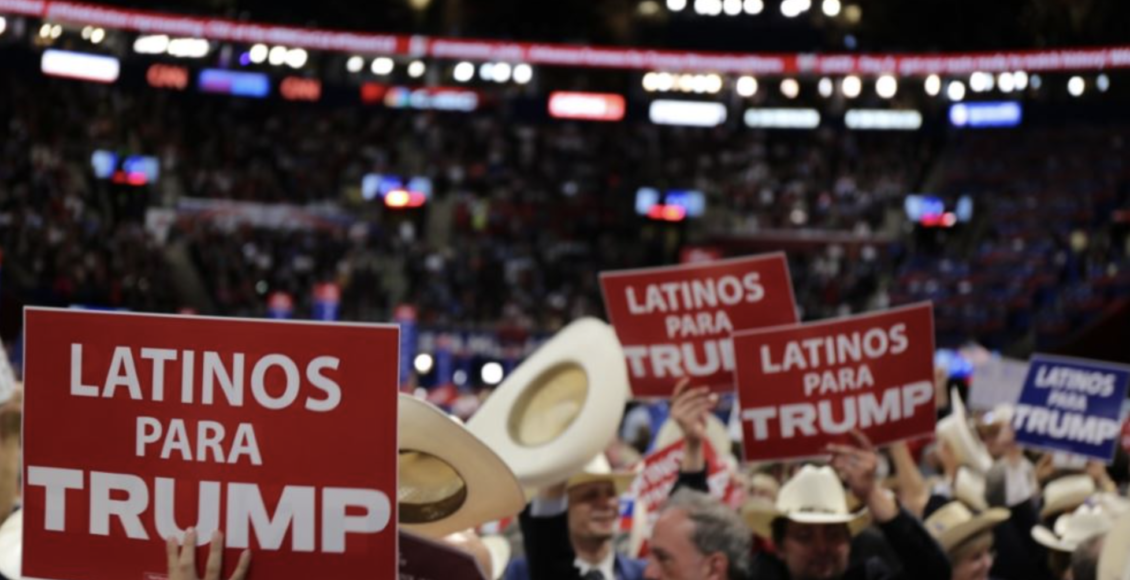How Minority Voters Could Sway the Election

As the United States Presidential election approaches, polls are still showing a tight race, with Vice President Kamala Harris at 49 per cent and former President Donald Trump at 48 per cent. The “slimmest of margins” in the seven key states are likely to determine the outcome of the election. This year, the swing states are Pennsylvania, Georgia, North Carolina, Michigan, Arizona, Wisconsin and Nevada, and the shifting views of minority voters in these states could determine the outcome of the election.
Each election, there is a significant number of newly eligible voters who have turned 18 since the last election, opening a margin for both Republicans and Democrats to conquer new votes. In this year’s election, there are 36.2 million Latinos who are eligible to vote, representing an increase in four million since 2020. Latinos now represent the second-largest racial group of voters in America behind white voters and in front of Black voters (34.4 million) and Asian voters (15 million).
Arizona has the largest share of Latinos among the six swing states with around 150,000 newly eligible Latino voters this year. In the 2020 elections, 67 per cent of eligible Latino voters in Arizona went to the polls, well above the national average of 54 per cent for Latino voters.
Usually, Democrats are more popular among minority voters. They lead among African Americans, Latinos, young voters, and voters with a college degree. Republicans, on the other hand, tend to have an advantage with white evangelical Christians, voters without a college degree, and from those rural areas. Although Democrats have a lead among Black and Latino voters, the party’s advantages have narrowed as more minority voters move toward the Republican party. In late August, one-quarter of Latino voters remained undecided in the upcoming election. And, in Georgia, approximately 850,000 Black residents did not vote in the 2020 Presidential election. Consequently, minority voters still represent significant uncertainty for the election.
A poll conducted by the Pew Research Center showed that 57 per cent of Latino registered voters plan to vote for Harris and 39 per cent plan to vote for Trump. For comparison, in 2012, Obama won 71 per cent of the Latino vote. Democrats are also experiencing a drop in support from Black voters. Polls are showing that Harris is attracting support from only 78 per cent of Black voters compared to the 87 per cent Joe Biden received in 2020. Trump is polling at 14 per cent for support among African Americans and 41 per cent among Hispanic voters, representing the highest levels seen for a Republican candidate in pre-election polls since 1964.
Political orientation is also becoming more polarized along gender lines. Women continue to lean towards the Democratic Party, and the Republican Party is attracting more young men from all backgrounds. In particular, Latino and African American men are becoming more conservative. On October 10, during a campaign rally in Pittsburgh, Pennsylvania, Former President Obama accused Black men of showing less enthusiasm towards Harris than her predecessor due to sexism.
In addition to this increasing gender polarization, there is also a growing gap between different generations of immigrants. While Democrats tend to appeal more to first-generation immigrants, third- and fourth-generation Americans are less supportive of Democrats. Despite Trump’s anti-immigration rhetoric, these voters are less likely to believe that his threats of deportation and prejudiced remarks apply to them, such as his accusing illegal immigrants of stealing “Black jobs” and “Hispanic jobs.”
Many minority voters are dissatisfied with the Democratic Party due to concerns with their policies on the economy and immigration. Polls show that Black and Hispanic male voters are more favourable toward a stronger border and stricter policies against crime, two policies that traditionally align more with the Republican agenda.
Although Republicans are gaining support among minority voters, Harris still leads among both Latinos and Black voters. But even the slimmest of advantages that Trump has over Harris within these demographics could be decisive. In 2020, only 43,000 votes among Wisconsin, Georgia, and Arizona allowed Biden to win, and in 2016, Trump won with an estimated 80,000 votes from all swing states. If Republicans or Democrats succeed in mobilizing these newly eligible and undecided minority voters, it could end up having a significant impact on November 5.
Featured image: “Latino delegates wave signs for Donald Trump at the Republican National Convention in Cleveland”, by Voice of America is licensed under CC0.
Edited by Lily Molesky
